- Administrator
- Albums and Singles
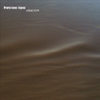 As a sporadic consumer of López's work, this album had a decidedly different feel than what I was expecting. I usually associate his name with cold, sterile digital sounds that occasionally veer into difficult territory, but always are worth the effort. Here, the work is much more organic and natural feeling, unsurprising given that it's based on field recordings of rivers in Argentina and Paraguay.
As a sporadic consumer of López's work, this album had a decidedly different feel than what I was expecting. I usually associate his name with cold, sterile digital sounds that occasionally veer into difficult territory, but always are worth the effort. Here, the work is much more organic and natural feeling, unsurprising given that it's based on field recordings of rivers in Argentina and Paraguay.
Throughout this single piece's 55 minute duration, the sound constantly mutates and evolves, never settling into a stagnant pattern.Instead, there feels like a shift every five minutes or so, not a drastic jump from one segment to another, but enough to keep things fresh. At various times, the untreated sounds of nature from the source recordings pop up, such as dripping water reverberated into a percussive expanse or what sounds like a woodpecker looped into a long pastiche.Recordings of rain are multitracked over one another to become a brutal symphony.
Other moments feel like the smallest elements of sound expanded to become oppressive:more than a few passages sound like recordings of silence amplified into infinity, the most subtle of low level sounds pushed into the red.Various forms of hissing and crackling exist mostly throughout the entire piece, never the same but always feel unified.
For me, the strongest facets of this work are the multiple, highly diverse crunchy textures that arise in different forms throughout.Early they take the form of crackling, clinking sounds, then expansive, hollow reverberations and granulated clicks.Other unidentifiable, but fascinating fragments of sound are there to be heard the whole time.
It's only into the final third or so that the various layers become congested, piling up onto one another to reach near painful levels:hissing, ultrasonic frequencies almost become an endurance test. This quickly falls apart, leaving almost near silence and the must subtle of sonic activity to close out the piece, fascinating little microcosmic textures that echo away into infinity.
While López's art is never "easy" listening, the organic, nature-sourced underpinnings of this album make it a more inviting work compared to the clinical dissections of sound he is most known for.The variety of sounds, alongside the constant flow of the piece make for a mesmerizing experience.
samples:
 
Read More
- Administrator
- Albums and Singles
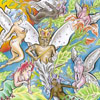 Even though its wrapped in a brightly colored, almost prog rock album cover of nymphs and mermaids, the music is the polar opposite: ritualistic improvised rhythms, clanging metal and tons of effects, all of which conveys an odd mix of sleaze and evil.
Even though its wrapped in a brightly colored, almost prog rock album cover of nymphs and mermaids, the music is the polar opposite: ritualistic improvised rhythms, clanging metal and tons of effects, all of which conveys an odd mix of sleaze and evil.
The album seems to be split conceptually into two different halves, with the first half focusing on percussive, occasionally rhythmic pieces, and the second half pushing more into harsher and violent territory."The Inbetween Sleep," on the first half focuses around an echoing bass guitar, a single note throb that becomes louder and more intense as it goes on, bringing in a variety of distant, echoing clicks and random rattles.There's an understated, but notable ritualistic vibe running through."Belly Trapped" has an even looser concept of rhythm driving it, mostly generated via random, found sounds that sound like ordinary household items gone awry.More dominant is a slew of grinding passages, none of which are very loud, but still abrasive, and reverb by the bucketload.
The second half goes more for the harsh, aggressive sounds and even darker moods."The Transformation of Love-Honey for the Queen" layers looped chants, echoing voices, and percussion into something that sounds more suited for accompanying ancient fertility rites.That is, until the effects come in and electronic chaos and screamed voices go somewhere else entirely, but retaining a sense of crazed, manic energy.
The accompanying piece, "The Transformation of Love-Victory of the White Snake," focuses more on inhuman sounds:crunchy, tactile loops and echoing clicks expand forever.The really shrill sine waves that show up, however, are a detriment more than anything else, enshrouding everything in a tinnitus haze that is too distracting. This is one of a few flaws that hamper this album.Another is the constant looped recording of a spoken "Kristus Kut" that appears with the same frequency throughout the well over 20 minute duration of "Vagina Libertatis."That track is a nice stew of bass guitar squall, power electronics vocals and spastic percussion, but the loop reminded me of one of those annoying pop-up ads that plague television these days.I know who I'm listening to, I don't need to be told every 5 seconds.
These, and a few other moments, are a blight on an otherwise strong work.There's a certain joyful disregard of any sort of musical conventions that is really notable throughout Butterfly King, which is a plus in my book.Unfortunately, with that comes the cost of having annoying bits that detract from the disc, but never render it awful or unlistenable.
samples:
 
Read More
- Administrator
- Albums and Singles
 Liturgy's music is a full-on sensory assault, at once controlled and chaotic, meditative and brutal, that demands you immerse yourself fully and pay attention. This is not background listening of any sort, nor easy listening—just an hour of damn good metal.
Liturgy's music is a full-on sensory assault, at once controlled and chaotic, meditative and brutal, that demands you immerse yourself fully and pay attention. This is not background listening of any sort, nor easy listening—just an hour of damn good metal.
Liturgy are a polarizing band. They play a brand of self-described "transcendental black metal," complete with an accompanying manifesto and philosophy, that may find them stuck between audiences—too self-righteous for devoted metalheads, too extreme for run-of-the-mill indie music fans. A glance around Internet forums finds that the band inspires a surprising amount of hatred (e.g., "They're a bunch of posers who just mindlessly regurgitate any philosophical bullshit they can find about black metal") for four regular guys immersed in their craft. So blindingly intense is their live presence that, when I saw them launch furiously into "High Gold" at a hole-in-the-wall bar at Austin's South by Southwest music festival a couple months ago, several folks walked out within seconds, perhaps overwhelmed by the density of sound.
All of which is to say that Aesthethica, Liturgy's second full-length, is a modern metal classic of the best sort: an album so blazingly artistic, recorded by a band so outspoken in its ideals, that it isolates many potential listeners before they've even heard a note. Aesthethica is full of contradictions: primal rock 'n' roll music that is rooted in black metal and hardcore, but isn't contained by the boundaries of either genre. Originally a solo project of cherub-faced frontman Hunter Hunt-Hendrix, Liturgy's membership now runs four deep—the antithesis of some depressed bum in corpsepaint—and Aesthethica sounds like a collaborative project that couldn't have been made by fewer people. Its songs are complex, sweeping, elaborately arranged, played by technically gifted musicians, energetic but never flashy.
So, Aesthethica draws from black metal: there are howling vocals, blastbeats and blindingly fast tremolo picking all over the album. The influence of hardcore music is also apparent in the intensity of these songs. Compositionally, though, Liturgy take a left turn into minimalist, avant-garde territory reminiscent of Glenn Branca's '70s experiments with droning repetition. The drumming flirts with cascading, jazzy fills that bounce off the walls of guitars, like a prism dispersing light. All sorts of interludes are present, too; the ritualistic, a capella chanting of "True Will" and "Glass Earth" are standouts. Most abrasive is "Helix Skull," a barrage of dissonant harmonics that opens the album's second half, serving as a break from the trance-inducing assault that dominates the album. At its best, Aesthethica is beautifully uplifting, a tidal wave of energy and repetition that, played at length, becomes hypnotic, romantic... even transcendental.
Great musicians know to end great albums on a strong note, and Liturgy save their best tune for last. After parting the heavens with "Glass Earth," dropping the listener's guard, "Harmonia" rains down a final, concentrated blast of ecstatic self-exorcism. Heard as a unified whole, Aesthethica is shockingly good, among my favorite albums this year. If it doesn't connect with every person that gives it a spin, it is perhaps all the sweeter for it—consider me converted.
Samples:
Read More
- Administrator
- Albums and Singles
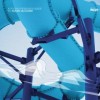 Emeralds guitarist Mark McGuire has been releasing his solo recordings on small-run CD-R and cassette pressings since 2007. This double-disc retrospective collects 20 of his best recordings over the years as selected by McGuire and Peter Rehberg—consider it McGuire's greatest hits.
Emeralds guitarist Mark McGuire has been releasing his solo recordings on small-run CD-R and cassette pressings since 2007. This double-disc retrospective collects 20 of his best recordings over the years as selected by McGuire and Peter Rehberg—consider it McGuire's greatest hits.
Fans of Emeralds' work, as well as its members' endless stream of varied, often improvisational solo recordings, will know that these guys rarely swing and miss. Pick up one of Mark McGuire's CD-Rs or tapes at a live show, for instance, and you're quite likely to be transfixed. The upside of McGuire's being so damn prolific is that each of his releases functions as a Polaroid snapshot of his work at the exact moment it was recorded. Of course, the trouble for devoted fans is that his music is often pressed in such limited quantities that it can be difficult to track down. A Young Person's Guide to Mark McGuire seeks to remedy this, in part, by packing as many of McGuire's tunes onto two discs as is feasible.
There's a healthy, varied selection of tracks from McGuire's recordings included, covering a wide range of moods and playing techniques. A Young Person's Guide opens with "Dream Team," a 17-minute guitar meltdown from the 2008 CD-R of the same name; it's a heady, challenging way for McGuire to kick off this compilation. "The Marfa Lights," which follows, couldn't be more different in its approach; instead of starting with a bang and winding slowly into the ether, like "Dream Team," it begins subtly with looped guitar, then adds layers of sharp, dissonant playing as it unfolds, reaching its peak toward the end.
"The Marfa Lights" is one of my favorite pieces here—I'd initially thought, "Wow, I'd love to hear the other tracks from that release!" before realizing McGuire had jam-packed the second disc of A Young Person's Guide with several other tracks from A Pocket Full of Rain, the 2009 double-cassette release it was selected from. Two of those tracks, the thick washes of sound in "Sick Chemistry" and "The Lonesome Foghorn Blows," are among the more effective short songs here, managing to conjure up specters of Emeralds' recent masterwork, Does It Look Like I'm Here?, in entirely-too-short form. Another, "Radio Flyer," finds McGuire in easy-listening mode; I get the sense that if I could just unplug his guitar from Lord knows how many effects pedals it's running through, it would sound excellent—as it does on "Sun Shining through the Open Barn Door," a beautiful acoustic piece.
The oldest material here is from 2007's Patterns of Development CD-R, which was limited to 75 copies at the time. Two of those four tracks—"Clague Woods" and "Slipstreams"—are too brief to make an impact, clocking in under two minutes apiece; McGuire stretches out more on the heavy, distorted Bardo Pond-isms of "Flight" and the tense atmosphere of "Ghosts around a Tree." The latter features a disembodied, operatic male voice crying in the background, overlayed with subdued guitar loops—a haunting combination that I don't recall McGuire exploring in the years since then.
The rarest inclusion on A Young Person's Guide is the 88-second "Explosion Alarm," from 2009's Losing Sleep CD-R, limited to 60 copies. Like several of the other short pieces here, it's pleasant, but too fragmented to feel necessary on its own; it functions as an interlude in the context of this collection. As a rule, McGuire's solo recordings seem to work best when he gives himself time to stretch out and develop; he doesn't strike with the quick, deadly accuracy of Emeralds at their most punchy and concise ("Double Helix"). I'm okay with that, though, and I'm pleased to hear McGuire playing to his strengths on tracks like the ornate, impossibly gorgeous "The Path Lined with Colorful Stones," from 2008's Light Movement CD-R.
The second disc of A Young Person's Guide includes five recordings from 2010, several of which are among McGuire's most promising works. The elegiac beauty of "Icy Windows," for instance, is a step forward; McGuire sets the stage with perhaps his most restrained guitar playing to date, and when the distorted lead guitar kicks in halfway through, I can feel my heart swell up in my chest. He experiments with stereo panning effects ("Skies") and bluesy palm-muted riffing ("The Invisible World") to fine effect. The final piece, "Inside Where It's Warm," is a gorgeous 13-minute comedown full of echoed guitar loops, the calm after the storm.
The material McGuire and Rehberg have included on A Young Person's Guide to Mark McGuire is so consistently warm and engaging that it's hard to find fault with the collection. It's a godsend to have this much of McGuire's solo material available on CD in such a well-curated package. No doubt each listener will find his or her own favorites—I'll be playing mine for some time.
Samples:
- The Marfa Lights
- Ghosts around the Tree
- Icy Windows
- Sun Shining through the Open Barn Door
- The Invisible World
Read More
- Administrator
- Albums and Singles
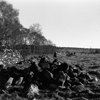 This album somehow earned a reputation for being one of Christina Carter's best despite being limited to a cassette-only edition of just 200 copies. Released during a fertile 2008 that also saw the release of Original Darkness on Kranky, and initially mistitled Texas Working Blues, this Blackest Rainbow re-release shines the spotlight on one of Christina's most direct, layered, and memorable albums.
This album somehow earned a reputation for being one of Christina Carter's best despite being limited to a cassette-only edition of just 200 copies. Released during a fertile 2008 that also saw the release of Original Darkness on Kranky, and initially mistitled Texas Working Blues, this Blackest Rainbow re-release shines the spotlight on one of Christina's most direct, layered, and memorable albums.
Take a look at the album descriptions that Christina has posted at her Many Breaths website. She describes her music in terms of concepts, exorcisms, words, realms, and memories, and only rarely uses the word "song" in a traditional way. When I wrote about Carter's Lace Heart back in September 2009, I said, "For Christina, songwriting is obviously more important than anything else," but after listening to more of her discography, I've discovered that's actually the exception, not the rule. More often than not, Christina prefers ideas to songwriting, and therefore gladly sacrifices accessibility to the bigger picture. I think that's one reason Electrice was so misunderstood, and it goes a long way in explaining why Texas Blues Working is so loved.
Christina's songwriting is exceptionally strong on this album. At first glance she appears to have abandoned her conceptual work for something a little more conventional. Unlike Masque Femine or A Blossom Fell, Texas is populated with familiar structures and strategies. There are chorus-like repetitions, strongly stated lyrics, virtuosic guitar solos, and big, muscular chords that echo with rhythmic urgency. These conventions make the music sound more communal and create a feeling of intimacy with Carter; instead of being driven by opaque personal references and conceptual schematics, Texas Blues Working moves under the impetus of familiar song-craft and plainly stated feelings.
Her songwriting is far from typical, of course. Carter prefers long, raga-like passages to simple chord progressions, and she's more likely to solo for five or six minutes than strum a simple three-chord melody, but she refrains from total improvisation, preferring a middle ground where hummable melodies are repeated with slight variations. "The Outer Planet" is a superb example of this strategy, but it's put to good use on "Bird's Nest" as well. In both cases, Carter layers an extended solo over a quiet bed of repeated chords, but close listening reveals that those solos are actually constantly evolving arabesques built from the melodic statement that opens each song. As these statements shift and transform, they sometimes merge with Christina's vocals, so that there's always a familiar melody playing even if there aren't very many pure repetitions happening.
Carter doesn't sever her connection to the realm of ideas entirely, however. It's probably no accident that the best song on Texas happens to be the one that brings her conceptual side most into the light. "Preserve Our Face" makes explicit what the other songs stated only implicitly: that, on this record, Christina is preoccupied with the ideas of repetition and authenticity just as much as she is with writing great songs. She sings,
"There are infinite people to be
infinite combinations of emotions to sing
and I don’t only want to be myself
but I only want to be myself
and I want to use my voice for good
however small the voice
however small the good in this world of foolish dream."
As she struggles with intentions and the temptation to indulge different personalities, she squeezes a taut, absolutely electrifying solo from her guitar, successfully manifesting the tension of her lyrics in the dusty hum of her strings. It's a superbly crafted song that marries two of her many sides in an almost perfect union.
On "Dinner Plate of Dust," which originally closed the album, Christina achieves a more intense anxiety by rending her melodies apart and disguising her rhythms with more spacious sounds and plenty of reverb. There's also a writhing guitar solo squirming around in the background the entire time; it's unsettling to say the least, and all the more uncomfortable because it comes at the end of such a pretty record. I suppose that an album titled Texas Blues Working could not end with Ms. Carter coming out of the blues happily, and if the record were to end here it would be a superb, if pessimistic, conclusion. Unfortunately, it was decided that an additional song, titled "Lady Friend," should be tacked onto the end as a bonus. Besides being the weakest song of the lot, "Lady Friend" sounds completely out of place. It's not even from the same sessions that spawned Texas Blues Working, but thankfully its sequestered to side D, where it stands alone. Anyone listening to the record can simply refrain from turning it over if they want to avoid hearing it.
Texas Blues Working is almost completely out of print at this point. A few distributors list it as in-stock, but it'll probably cost American readers close to $40 after shipping. Of course, the music is well worth it, but for those who don't want to spend the money, Blackest Rainbow is issuing a CD version sometime very soon.
samples:
 
Read More
- Administrator
- Albums and Singles

Feasting With Panthers is a collaboration between Marc Almond and composer Michael Cashmore setting poems of Count Eric Stenbock plus unique translations by celebrated poet Jeremy Reed of poems by Jean Genet, Rimbaud, Paul Verlaine - as well as Reed's own poetry - to music. 'Decadent' poems of thwarted love, ill-fated romance, decadence and death are woven with homo-eroticism and laced with opium and are accompanied by Michael Cashmore's haunting and melancholic music that gives the verses a feeling of yearning for beauty and a longing for a lost innocence and youth.
The album was recorded over several years sending music files by e-mail and post, the artists never once recording together in the studio: Berlin based Michael Cashmore working at home to compose the music, playing all of the instruments and adding Marc's vocals from files recorded in London. The result is a glorious union, both in voice and music, complementing the texts.
The project began after Current 93's David Tibet gave Marc a book of poems by the Baltic German poet Count Stanislaus Eric Stenbock that he had published through the Durtro label . Marc was instantly attracted to the dark erotic and melancholic yearning in the verse and contacted Michael Cashmore who he had previously worked with on Current 93's reading of Idumea. He felt Michael would have the right understanding of the verse with his intricate, beautiful musical compositions. From this, the project developed to include many of Marc's favourite poems by some of his favourite 'outsider' poets with common ground.
Marc and Michael released a limited edition of Stenbock's 'Gabriel and The Lunatic Lover' through Durtro and performed both songs at The Queen Elizabeth Hall in London with Current 93 (see YouTube) in 2008. The complete album is now released through Cherry Red/ Strike Force Entertainment.
The Thief And The Night / Sonnet XI / Boy Ceasar / The Lunatic Lover / Crime Of Love / The Sleeper In The Valley / The Song Of The Unwept Tear / Patron Saint Of Lipstick / Gabriel / El Desdichado / Hotel De France And Poetry / The Man Condemned To Death / Feasting With Panthers
RELEASED 6th OF JUNE 2011
sfe015 (Cherry Red / Strike Force Entertainment)
Read More
- Administrator
- Albums and Singles
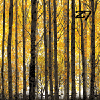 27 is a small band. There are two numbers in the name and three people in the group. Brittle Divinity, their latest full length, is appropriately enough a small record. Their last outing, 2007's Holding on for Brighter Days was bigger and broader, more produced and more varied than what they are doing here. But I like this better.
27 is a small band. There are two numbers in the name and three people in the group. Brittle Divinity, their latest full length, is appropriately enough a small record. Their last outing, 2007's Holding on for Brighter Days was bigger and broader, more produced and more varied than what they are doing here. But I like this better.
Reproductive
The album's second song, "Sometime Somewhere Soon" is beautiful and wistful and it's composed of not much more than voices, bass, and some simple keys. "Love Letter" is similarly sparse filled with more space than sound. The emptiness between notes makes the reading of a love letter seem almost sinister, turning a song that could come across as precious into something darkly longing. When the band does air it out (briefly, at the end of "Sacred Scars,") it gives the album some well-earned weight as if everything had been leading up to one big, fuzzy crescendo.
But when "Sacred Scars" is over, there's still three quarters of an album to go, and it never gets loud again. The synth work is more of a focal point here than on some of 27's older material, but it also blends together better with the rest of the instruments. Any song might be based on a guitar riff or a piano figure or a couple of chords on a Rhodes, but they all convene nicely because the record never leaves that intimate space created by small arrangements.
There is something to be said for making a small, focused record even when the means to experiment and go bigger are available. Brittle Divinity is that rare kind of record that sounds like a personal audience with the band rather than a carefully-produced and manufactured experience. Both have their place, but 27 sounds best like this.
My favorite song, "Man on Wire," displays a bit of lyrical genius by using Phillipe Petit's World Trade Center high wire stunt (documented in the wonderful film of the same title,) as a metaphor for a precarious relationship. I loved the movie and it even delved into Petit's love life, but I never would have made the connection between the act of walking across a high wire and that treacherous act of trying to connect with someone else who seems relatively close, but perilously difficult to reach. It's brilliant.
Samples:
 
 
Read More
- Administrator
- Albums and Singles
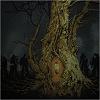 After so much hype, the long awaited collaboration between Sunn O))) and Boris was bound to disappoint. It starts off amazingly but overall there is something missing from the album. With 17 different musicians contributing a few of the pieces get too muddled and everyone finishes the album a bit lost. In the end it is a great idea that doesn’t quite work.
After so much hype, the long awaited collaboration between Sunn O))) and Boris was bound to disappoint. It starts off amazingly but overall there is something missing from the album. With 17 different musicians contributing a few of the pieces get too muddled and everyone finishes the album a bit lost. In the end it is a great idea that doesn’t quite work.
Southern Lord
Opening the beautiful sleeve and starting the disc, the roar of “Etna” provides an awesome beginning to Altar. A powerful drone that is encapsulates both the amplifier worship of Boris and of Sunn O))), it is a promising start to the album to say the least. This continues nicely into “N.L.T.,” where everyone bar Boris’ Atsuo and Sunn O)))’s Bill Herzog takes a break. Atsuo’s bowed cymbal and gong lead to many wonderfully sharp sounding noises while Herzog makes low, metallic groans using his upright bass. The album then peaks with “The Sinking Belle (Blue Sheep)” which sees the two bands plus guests get all introspective and soppy. Stephen O’Malley swaps his amps for a piano and the rest of the players turn down the volume. Jesse Sykes sings in a croak full of sadness. This song is worth getting Altar for alone. At eight minutes it’s far too short, Boris bring the lighter parts of their Pink album to the table and Sunn O))) shockingly add to the melodies with subtle beauty.
The latter half of the album alas isn’t as good as the first. Joe Preston appears on “Akuma No Kuma,” a vocoder and synthesiser led piece that sounds like Preston’s project Thrones but not as good. Once past the novelty of Greg Anderson and O’Malley using synths it became clear that what they are doing with the synths isn’t especially good. Atsuo’s drumming and Preston’s vocals are nice but not strong enough to keep the momentum of the song going. What follows “The Sinking Belle” is a real let down. The first three pieces build up to such a high point and then it just drops clumsily. It takes some time for the album to get back on track; only towards the end of “Fried Eagle Mind” does it start to engage me again. Unfortunately it’s too little, too late as the rest of the album lacks the fire that burned so strong before. These last few pieces highlight the dangers of working with too many guest musicians: there are too many ideas being poorly executed that could have worked better with fewer cooks.
The first 5000 copies on CD (and all copies on vinyl) come with a bonus disc featuring a 28 minute drone called “Her Lips were Wet with Venom (satanoscillatemymetallicsonatas).” Dylan Carlson from Earth plays guitar on it so I had high hopes for it, here is three of my favourite bands hopefully making the record that some online shops make legends about (have a Google for Reserve Not Yet Met by the three bands). With the crash of a gong and guitars sounding like a concerto of jet turbines my hopes were met. The various musicians add their own stamp to different parts of the piece; Wata’s screaming lead guitar is as powerful as always and Carlson’s country twanging sounds like the eye of a droning hurricane. It took a few listens to fully appreciate “Her Lips Were Wet with Venom” but it has revealed itself as a mighty beast.
One of the main problems I have with Altar is how little presence Sunn O))) have on it. The primitive and unholy rituals from their own albums and live shows are almost completely absent. Granted there are massive drones but very little in the way of riffing. Altar to me is more accurately described as a Boris record with guests. This album isn’t much of a change for them, they’ve always moved between the heavy and the delicate. They’ve never needed all these extra musicians to make similar music, the drones don’t sound much fuller and the spacey tracks don’t sound much more spaced out.
At its best Altar is incredible, some of the best material that any of the artists present have put their names to; at its worst it is humdrum, there is no particularly bad track but the weaker pieces definitely pull the album down as a whole. I imagine that it will grow on me over time but for now I am a little disappointed with Altar.
samples:
- The Sinking Belle (Blue Sheep)
- Akuma No Kuma
- Her Lips were Wet with Venom (satanoscillatemymetallicsonatas)
Read More
- Administrator
- Albums and Singles
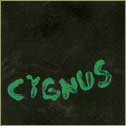 This is a degenerate two guitar record that sounds like it was dredged from the Mississippi along with rotted bodies and tin can telephones still attached. Sludgy doesn’t even begin to describe the muck that these two guys are playing through. This is avant-garde blues as seen through carburettor syrup and burnt amps.
This is a degenerate two guitar record that sounds like it was dredged from the Mississippi along with rotted bodies and tin can telephones still attached. Sludgy doesn’t even begin to describe the muck that these two guys are playing through. This is avant-garde blues as seen through carburettor syrup and burnt amps.
Hidden away from prying daylight, the music seems happy to both drag the guitar into the Stone Age using it as a trephination tool. From single notes to lazy strums this duo slouch into their fret boards with fingers, bricks and chunks of steel. Even at nearly 14 minutes long “Two” still fails to grasp the guitar by the right end. Starting without any recognisable guitar sourced sounds it soon slips into a beautifully removed collection of noises. One player makes the six strings whistle in the dark while the other instrument is cajoled into grumbling like an ale-sodden park bench sleeper.
From a reverberating tinny marble scratch both guitars puff up to harangue each other like jealous siblings, both through the instruments and (what sounds like) shitty walkie-talkies. There are a couple of moments on this five track CD-R that Cygnus seem on the verge of resembling a skinny pocked little thing. The music turns inward after the night’s gone sour and the speed’s been cut with flour, these sounds seem to reach for a coherent majesty beyond their reach. Slipping into some gorgeously lost Cure demo guitar styled playing, their note play coming out with a chiming edge of discordance. They ramble up and over the concern for melody.
Clasped in a paint blobbed jewel case that reeks of spray-paint, this looks as fucked as it sounds. Unlike a lot of the exploratory noisy end of solo guitar gurgling, no bong is required to get into this. While Cygnus definitely have their shit untogether, it’s in a good way.
samples:
Read More
- Administrator
- Albums and Singles
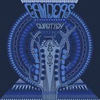 Available as two vinyl LPs or as this one CD these four solo guitar pieces range in length from around 16 to 20 minutes. On his favored Breedlove 12 string, Cam Deas plays guitar like ringing a (Tibetan) bell and with an intimate intensity that is by turns wild, meditative, melodic and transporting. Within an extended structure he rubs and thrashes the strings into an extraordinary, calm, deliberate, fluttering frenzy.
Available as two vinyl LPs or as this one CD these four solo guitar pieces range in length from around 16 to 20 minutes. On his favored Breedlove 12 string, Cam Deas plays guitar like ringing a (Tibetan) bell and with an intimate intensity that is by turns wild, meditative, melodic and transporting. Within an extended structure he rubs and thrashes the strings into an extraordinary, calm, deliberate, fluttering frenzy.
Quadtych was recorded last December at London’s Roundhouse but Deas had been working on several sections for months. This, and his knowledge of the history of guitar improvisation, gives the music its own definite sense of geography and time. This structure allows it to avoid sounding messy or self-indulgent. Instead, Deas conjures sounds which seem familiar and deliberate (in pace and in the sense that he knows exactly what he doing).
Cam Deas’ style and technique allows for his intellect and emotion to be fully expressed. He hammers and pulls strings, scrapes them like he’s polishing a magic lamp, tweaks behind the nut, allows some notes to resound slowly into silence and pulverizes others with cascading repetition. Its a very tactile experience. Indeed, after listening to the agonizingly protracted rubbing on "Part One," it was touch and go whether I'd make it through this review without using the word "clitoris."
It is pleasing to hear him use a rolling intensity reminiscent of the sheer bombastic volume of Leadbelly and to spot Eastern-influenced textures which echo Robbie Basho. Deas' work may have traces of Bailey's spluttering abstraction and a very faint whiff of Fahey's more embroidered approach but he seems genuinely to be an artist on a journey deep into unique territory. It is a landscape both spacious and densely tangled; maybe similar to the depiction of a forest glade on the relaxing blue-on-blue cover artwork by Jake Blanchard. These sounds conjured in me personal feelings and wider notions of folk memory, the mythology of the forest, ancient beliefs, the survival of superstition, and the comforting inevitability in seasonal repetition.
Initially, I felt a little disappointed that the four pieces on Quadtych have no titles beyond being numbered. But this allows for anyone to enjoy their range and variation in a pure sense and to interpret them according to personal response. Thus, I named the four: "There is no coincidence," "Reflexes/Chinese Blouse," "Floresta da Tijuca," and "Time Rides In A Horse." Perhaps I’m barking up the wrong tree but feel safe to predict that no-one who gets through this album will be calling any of the tracks "Bloke Fiddling About With Wood (And Wires)."
samples:
 
Read More
- Administrator
- Albums and Singles
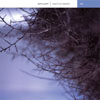
While the five distinct works that comprise this album have different constructs and varying sound sources, the still, subtle sounds and attention to detail is a constant throughout, weaving together into one consistent document.
The first three pieces are more traditional, compositionally speaking, being fully scored and performed by other artists."Objects in Stillness" is a perfect title for the frozen, but not static sounds that are created via bassoon, viola, guitar and percussion, along with four sine tones.The high pitched sine tones carry most of the work, not quite shrill enough to be grating but definitely on the higher end of the spectrum.Slow, long passages of bassoon drone can be heard, counterbalanced by the infrequent, single chiming guitar note.
"A Radiance Scored with Shadow" draws from a drastically different suite of instruments:amplified paper, bass drum, compressed air, and bowed vibraphone.Even with this far less conventional set of instruments, Cluett creates a similar world of sparse, quiet ringing and subtle studies of sound.The paper sounds give a rougher, more chaotic feel, but only in comparison to the other pieces.In any other context, there is still an intense level fo restraint throughout:even as the piece reaches a near-climax of sound and dynamics towards the end, it is quickly reeled back in.
Of the two longer pieces, "Doleros (Audio Tourism at Ringing Rocks)" is perhaps the most distinct.Documenting an installation at a Brooklyn art gallery, Cluett uses construction materials in a very different context.Rather than just the spacious, arid passages of sound from before, here there is a layer of clinking little bits of sound, panned around the entire piece, creating an almost rhythmic underpinning.Below that, a humming drone expands, changing ever so slowly.
The final work, "Untitled (Objects of Memory)," is a long live performance.Utilizing different forms of existing sounds, from feedback to tape players and computers, Cluett is working more towards the chaotic end of the spectrum.While it has the same dreamy, slow motion vibe of the other works, there is a notable sense of urgency with a more forceful approach.While it is mostly a meditative work of tones, there exists the presence of instability via warbling sounds and rattling textures, giving a more dramatic flair to the performance.
Objects of Memory is one of those contradictory works that sounds icy and still on the surface, but upon closer inspection is a much more diverse and varied set of works.Even through all of the different compositional modalities that Cluett employs, his attention to detail and structure is never forgotten, and the result is a challenging, but definitely rewarding piece of sound art.
samples:
 
Read More


